430L Powder
$0.00
430L Powder
| Product | 430L Powder |
| CAS No. | 7439-89-6 |
| Appearance | Silvery-Gray Powder |
| Purity | ≥99%, ≥99.9%, ≥95%(Other purities are also available) |
| APS | 1-5 µM, 10-53 µM (Can be customized), Ask for other available size range. |
| Ingredient | Fe-16Cr |
| Density | 2.8g/cm3 |
| Molecular Weight | N/A |
| Product Codes | NCZ-DCY-343/25 |
430L Description:
430L Powder is one of the numerous advanced ceramic materials manufactured by Nanochemazone. Nanochemazone produces too many standard grades when applicable, including Mil Spec (military grade); ACS, Reagent and Technical Grade; Food, Agricultural and Pharmaceutical Grade; Optical Grade, USP and EP/BP (European Pharmacopoeia/British Pharmacopoeia) and follows applicable ASTM testing standards. Typical and custom packaging is available. Additional technical, research and safety (MSDS) information are available. Please request a quote above for more information on lead time and pricing.
430L Powder Related Information :
Storage Conditions:
Airtight sealed, avoid light and keep dry at room temperature.
Please contact us for customization and price inquiry
Email: [email protected]
Note: We supply different size ranges of Nano and micron as per the client’s requirements and also accept customization in various parameters.
430L Powder
430L powder is a ferritic stainless steel powder containing 17% chromium with additions of molybdenum and niobium for enhanced corrosion resistance. It provides an optimal balance of corrosion resistance, strength, weldability and cost.
Overview of 430L Powder
430L powder is a ferritic stainless steel powder containing 17% chromium with additions of molybdenum and niobium for enhanced corrosion resistance. It provides an optimal balance of corrosion resistance, strength, weldability and cost.
Key properties and advantages of 430L powder:
430L Powder Properties and Characteristics
| Properties | Details |
| Composition | Fe-17Cr-Nb-Mo alloy |
| Density | 7.7 g/cc |
| Particle shape | Irregular, angular |
| Size range | 10-150 microns |
| Apparent density | Up to 50% of true density |
| Flowability | Moderate |
| Corrosion resistance | Excellent in many environments |
| Strengthening | Solid solution and precipitation strengthening |
430L powder is widely used in chemical processing, marine hardware, automotive exhaust components, industrial valves and flanges, and structural parts needing weathering resistance.
430L Powder Composition
| Element | Weight % |
| Iron (Fe) | Balance |
| Chromium (Cr) | 16-18% |
| Carbon (C) | 0.12% max |
| Silicon (Si) | 1% max |
| Manganese (Mn) | 1% max |
| Molybdenum (Mo) | 0.5% max |
| Niobium (Nb) | 0.3-0.6% |
| Nitrogen (N) | 0.03% max |
| Sulfur (S) | 0.03% max |
Iron provides the base matrix and ductility
Chromium enhances corrosion and oxidation resistance
Niobium and molybdenum provide precipitation strengthening
Carbon, nitrogen and sulfur are controlled as tramp elements
430L Powder Physical Properties
| Property | Values |
| Density | 7.7 g/cc |
| Melting point | 1400-1450°C |
| Electrical resistivity | 0.6-0.7 μΩ-m |
| Thermal conductivity | 26 W/mK |
| Curie temperature | 1440°C |
| Maximum service temperature | 650-750°C |
Density is moderately high for a stainless steel
Provides high temperature strength and corrosion resistance
Resistivity higher than pure iron or low alloy steels
Becomes paramagnetic above Curie point
Can withstand moderately high operating temperatures
The physical properties make 430L suitable for corrosive environments and moderately high temperature applications requiring oxidation resistance.
430L Powder Mechanical Properties
Provides moderately high strength for a stainless steel
Excellent ductility and impact toughness
Strength can be further increased through heat treatment
Hardness is relatively low compared to martensitic grades
The properties provide a good combination of strength, ductility, and toughness required for many corrosive environments and load conditions.
430L Powder Applications
| Industry | Example Uses |
| Chemical | Tanks, valves, pipes, pumps |
| Automotive | Exhaust components, fuel injection parts |
| Construction | Cladding, architectural features |
| Oil and gas | Wellhead equipment, drilling tools |
| Manufacturing | Pressing tooling, molds, dies |
Some specific product uses:
Marine hardware like railings, hinges, fasteners
Automotive exhaust manifolds, mufflers, catalytic converters
Chemical processing equipment like valves and flanges
Oil country tubular goods for downhole environments
Architectural paneling, cladding and decorative features
Its excellent corrosion resistance combined with good manufacturability make 430L widely used across industries needing weathering and oxidation resistance.
430L Powder Standards
| Standard | Description |
| ASTM A743 | Standard for corrosion resistant chromium steel castings |
| ASTM A744 | Standard for corrosion resistant chromium steel sheet and strip |
| AMS 5759 | Annealed corrosion resistant steel bar, wire, forgings |
| SAE J405 | Automotive weathering steel sheet |
| DIN 17440 | Stainless steels for corrosion resistant applications |
These standards define:
Chemical composition limits of 430L alloy
Permissible impurity levels like S, P
Required mechanical properties
Approved production methods
Compliance testing protocols
Proper packaging, labeling and documentation
Meeting certification requirements ensures suitability of the powder for the target applications and markets.
430L Powder Particle Size Distribution
| Particle Size | Characteristics |
| 10-45 microns | Ultrafine grade for high density and surface finish |
| 45-150 microns | Coarse grade provides good flowability |
| 15-150 microns | Standard grade for pressing and sintering |
Finer particles allow greater densification during sintering
Coarser powder flows better and fills die cavities uniformly
Size range is tailored based on final part properties needed
Both gas and water atomized powders are available
Controlling particle size distribution allows optimizing processing behavior and final part performance.
430L Powder Apparent Density
| Apparent Density | Details |
| Up to 50% of true density | For irregular powder morphology |
| 3.5-4.5 g/cc typical | Improves with greater packing density |
Higher apparent density improves powder flow and compressibility
Irregular morphology limits maximum packing density
Values up to 60% are possible with spherical powders
High apparent density improves press filling efficiency
Higher apparent density leads to better manufacturing productivity and part quality.
| Method | Details |
| Gas atomization | High pressure inert gas breaks molten metal stream into fine droplets |
| Water atomization | High pressure water jet breaks metal into fine particles |
| Vacuum induction melting | High purity input materials melted under vacuum |
| Multiple remelting | Improves chemical homogenization |
| Sieving | Classifies powder into different particle size ranges |
Gas atomization provides clean, spherical powder morphology
Water atomization is a lower cost process with irregular particles
Vacuum melting and remelting minimizes gaseous impurities
Post-processing allows customization of particle sizes
Automated production and stringent quality control result in consistent powder suitable for critical applications.
430L Powder Handling and Storage
| Recommendation | Reason |
| Use PPE and ventilation | Avoid exposure to fine metallic particles |
| Ensure proper grounding | Prevent static discharge while handling |
| Avoid ignition sources | Powder can combust in oxygen atmosphere |
| Use non-sparking tools | Prevent possibility of ignition during handling |
| Follow safety protocols | Reduce risk of burns, inhalation, and ingestion |
| Store in stable containers | Prevent contamination or oxidation |
As 430L powder is flammable, ignition and explosion risks should be controlled during handling and storage. Otherwise it is relatively safe with proper precautions.
430L Powder Inspection and Testing
| Test | Details |
| Chemical analysis | ICP and XRF verify composition |
| Particle size distribution | Laser diffraction determines size distribution |
| Apparent density | Hall flowmeter test per ASTM B212 standard |
| Powder morphology | SEM imaging shows particle shape |
| Flow rate analysis | Gravity flow rate through specified nozzle |
| Loss on ignition | Determines residual moisture content |
Stringent testing ensures the powder meets the required chemical purity, particle characteristics, density, morphology, and flowability per applicable specifications.
Advantages of 430L Powder
Excellent corrosion resistance in many environments
Good ductility, toughness and weldability
Cost-effective compared to austenitic grades
Can be precipitation hardened to increase strength
Good high temperature oxidation resistance
Readily formable using conventional techniques
Disadvantages of 430L Powder
Lower strength than martensitic or ferritic grades
Requires care during welding to avoid sensitization
Susceptible to chloride stress corrosion cracking
Limited high temperature tensile strength
Lower hardness and wear resistance than austenitic grades
Surface discoloration over time in outdoor exposure
Comparison With 304L Powder
430L vs 304L Stainless Steel Powder
| Parameter | 430L | 304L |
| Density | 7.7 g/cc | 8.0 g/cc |
| Strength | 450-650 MPa | 520-620 MPa |
| Corrosion resistance | Excellent | Outstanding |
| Heat resistance | Good | Excellent |
| Weldability | Good | Excellent |
| Cost | Low | High |
| Uses | Automotive, construction | Chemical processing, marine |
430L has slightly lower strength but better cost
304L has superior corrosion and heat resistance
430L has better room temperature toughness
304L is preferred for applications above 500°C
430L suited for outdoor structures and automotive parts
430L Powder FAQs
Q: What are the main applications of 430L stainless steel powder?
A: Main applications include automotive exhaust components, chemical processing equipment, oil and gas tools, architectural paneling and cladding, marine hardware, and manufacturing tooling.
Q: What precautions should be taken when working with 430L powder?
A: Recommended precautions include ventilation, PPE, proper grounding, inert atmosphere, avoiding ignition sources, using non-sparking tools, and safe storage in stable containers.
Q: What is the effect of niobium addition in 430L stainless steel?
A: Niobium provides precipitation strengthening through formation of nitrides and carbides. This strengthens the steel while retaining good corrosion resistance and ductility.
Q: How does 430L differ from 409 and 439 stainless steel grades?
A: 430L has higher corrosion resistance than 409 and higher strength than 439. It provides an optimal combination of corrosion resistance, formability, weldability and cost.
Category: Iron Based Alloy Powder
Description
Description
Note: For pricing & ordering information, please get in touch with us at [email protected]
Please contact us for quotes on Larger Quantities and customization. E-mail: [email protected]
Customization:
If you are planning to order large quantities for your industrial and academic needs, please note that customization of parameters (such as size, length, purity, functionalities, etc.) is available upon request.
NOTE:
Images, pictures, colors, particle sizes, purity, packing, descriptions, and specifications for the real and actual goods may differ. These are only used on the website for the purposes of reference, advertising, and portrayal. Please contact us via email at [email protected] or by phone at (+1 780 612 4177) if you have any
Reviews (0)
Only logged in customers who have purchased this product may leave a review.
Shipping & Delivery
Related products
300M Stainless Steel Powder
$0.00
300M Stainless Steel Powder
| Product | 300M Stainless Steel Powder |
| CAS No. | N/A |
| Appearance | Silver-Gray Powder |
| Purity | ≥99%, ≥99.9%, ≥95%(Other purities are also available) |
| APS | 1-5 µM, 10-53 µM (Can be customized), Ask for other available size range. |
| Ingredient | Fe-Cr-Ni |
| Density | 7.85g/cm3 |
| Molecular Weight | N/A |
| Product Codes | NCZ-DCY-337/25 |
300M Stainless Steel Description:
300M Stainless Steel Powder is one of the numerous advanced ceramic materials manufactured by Nanochemazone. Nanochemazone produces too many standard grades when applicable, including Mil Spec (military grade); ACS, Reagent and Technical Grade; Food, Agricultural and Pharmaceutical Grade; Optical Grade, USP and EP/BP (European Pharmacopoeia/British Pharmacopoeia) and follows applicable ASTM testing standards. Typical and custom packaging is available. Additional technical, research and safety (MSDS) information are available. Please request a quote above for more information on lead time and pricing.300M Stainless Steel Powder Related Information :
Storage Conditions: Airtight sealed, avoid light and keep dry at room temperature. Please contact us for customization and price inquiry Email: [email protected] Note: We supply different size ranges of Nano and micron as per the client’s requirements and also accept customization in various parameters. 300M Stainless Steel Powder 300M stainless steel powder is a specialized material used in powder metallurgy and additive manufacturing applications. This high-alloy austenitic stainless steel exhibits excellent corrosion resistance and high strength properties. 300M powder can be used to create complex metal components using advanced manufacturing techniques like selective laser sintering (SLS), direct metal laser sintering (DMLS), and binder jetting. The fine spherical powders spread easily and sinter uniformly, producing dense parts. 300M has a high nickel and chromium content which gives it excellent corrosion resistance comparable to 304 and 316 stainless steel. The composition is controlled within narrow ranges as shown below: 300M Stainless Steel Powder Composition| Element | Composition Range |
| Carbon (C) | 0.05% max |
| Silicon (Si) | 1.0% max |
| Manganese (Mn) | 2.0% max |
| Phosphorus (P) | 0.03% max |
| Sulfur (S) | 0.01% max |
| Chromium (Cr) | 24.0-26.0% |
| Nickel (Ni) | 19.0-22.0% |
| Molybdenum (Mo) | 4.0-5.0% |
| Nitrogen (N) | 0.10-0.16% |
| Iron (Fe) | Balance |
| Property | Value |
| Density | 7.9 g/cm3 |
| Melting Point | 1370°C (2500°F) |
| Thermal Conductivity | 12 W/m-K |
| Electrical Resistivity | 72 μΩ-cm |
| Modulus of Elasticity | 200 GPa |
| Poisson’s Ratio | 0.29 |
| Tensile Strength | 165ksi (1140 MPa) |
| Yield Strength | 140ksi (965 MPa) |
| Elongation | 35% |
| Industry | Common Applications |
| Aerospace | Engine components, structural parts, landing gear |
| Automotive | Valve bodies, pump parts, turbocharger components |
| Medical | Implants, prosthetics, surgical instruments |
| Chemical | Pumps, valves, pipe fittings |
| Oil & Gas | Downhole tools, wellhead parts, offshore components |
| Industrial | Food processing equipment, press plates, dies and molds |
| Consumer | Watch cases, jewelry, decorative artware |
| Parameter | Typical Values |
| Particle shape | Spherical, satellite, irregular |
| Particle size | 15-45 μm, 15-53 μm, 53-150 μm |
| Apparent density | 2.5-4.5 g/cm3 |
| Tap density | 3.5-4.5 g/cm3 |
| Flow rate | 15-25 s/50g |
| Carbon content | < 0.05 wt% |
| Oxygen content | < 0.15 wt% |
| Nitrogen content | 0.10-0.16 wt% |
| Hydrogen content | < 0.0015 wt% |
| Test | Details |
| Chemical analysis | ICP-OES, ICP-MS, wet chemistry, spark OES |
| Particle size distribution | Laser diffraction, sieve analysis |
| Morphology | SEM imaging, microscopy |
| Powder density | Scott volumeter, Hall flowmeter |
| Flow rate | Hall flowmeter |
| Moisture analysis | Thermogravimetric analysis |
| Test | Details |
| Density | Archimedes’, Helium pycnometry |
| Surface roughness | Profilometer, interferometry |
| Hardness | Rockwell, Vickers, Brinell |
| Tensile strength | ASTM E8 |
| Microstructure | Optical microscopy, image analysis |
| Layer bonding | Electron microscopy, dye penetrant |
| Porosity | X-ray tomography, image analysis |
| Surface defects | Penetrant testing, microscopy |
| Alloy | Composition | Properties | Applications |
| 300M | High Ni, Cr, Mo | Excellent corrosion resistance, good ductility and toughness, high strength to 600°C | Aerospace, oil & gas, chemical, high temp uses |
| 316L | Medium Ni, Cr | Excellent corrosion resistance, readily weldable, good bio-compatibility | Marine hardware, medical implants, food processing |
| 17-4PH | Medium Ni, Cr + Cu | High hardness and strength, good corrosion resistance, heat treatable | Aerospace, tooling, automotive, plastic molds |
304 Powder
$0.00
304 Powder
| Product | 304 Powder |
| CAS No. | 65997-19-5 |
| Appearance | Silver-Gray Powder |
| Purity | ≥99%, ≥99.9%, ≥95%(Other purities are also available) |
| APS | 1-5 µM, 10-53 µM (Can be customized), Ask for other available size range. |
| Ingredient | FeCr18Ni10 |
| Density | 7.9g/cm3 |
| Molecular Weight | N/A |
| Product Codes | NCZ-DCY-356/25 |
304 Description:
304 Powder is one of the numerous advanced ceramic materials manufactured by Nanochemazone. Nanochemazone produces too many standard grades when applicable, including Mil Spec (military grade); ACS, Reagent and Technical Grade; Food, Agricultural and Pharmaceutical Grade; Optical Grade, USP and EP/BP (European Pharmacopoeia/British Pharmacopoeia) and follows applicable ASTM testing standards. Typical and custom packaging is available. Additional technical, research and safety (MSDS) information are available. Please request a quote above for more information on lead time and pricing.304 Powder Related Information :
Storage Conditions: Airtight sealed, avoid light and keep dry at room temperature. Please contact us for customization and price inquiry Email: [email protected] Note: We supply different size ranges of Nano and micron as per the client’s requirements and also accept customization in various parameters. Stainless steel 304 Powder for 3D Printing 304 powder is a form of stainless steel powder that is widely used in various industries due to its exceptional properties. It is composed of iron, chromium, and nickel, which give it excellent corrosion resistance, high strength, and good formability. The powder form allows for easy processing and customization according to specific requirements. Introduction To 304 Powder 304 powder is a form of stainless steel powder that is widely used in various industries due to its exceptional properties. It is composed of iron, chromium, and nickel, which give it excellent corrosion resistance, high strength, and good formability. The powder form allows for easy processing and customization according to specific requirements. Composition And Properties 304 powder primarily consists of iron, with approximately 18% chromium and 8% nickel. These alloying elements contribute to its corrosion resistance and durability. Additionally, it contains small amounts of carbon, manganese, phosphorus, sulfur, and silicon. The combination of these elements results in a material with remarkable mechanical and chemical properties. Some key properties of 304 powder include: Corrosion resistance: 304 powder exhibits excellent resistance to corrosion from a wide range of substances, including water, acids, and alkalis. Strength and durability: It has high tensile strength, making it suitable for applications that require robust and long-lasting components. Formability: 304 powder can be easily formed into different shapes, allowing for versatility in manufacturing processes. Heat resistance: It maintains its strength and structural integrity even at elevated temperatures. Hygienic properties: Due to its non-porous surface, it is easy to clean and maintain sanitary conditions in applications such as food processing. Industrial Applications 304 powder finds extensive use in various industries. Let’s explore some of its prominent applications: Automotive Industry In the automotive sector, 304 powder is utilized in the manufacturing of exhaust systems, mufflers, and other components exposed to corrosive gases and liquids. Its resistance to oxidation and high-temperature environments makes it an ideal choice for these applications, ensuring longevity and reliability. Food Processing The food processing industry demands materials that meet stringent hygiene and corrosion resistance requirements. 304 powder is widely employed in food processing equipment, such as tanks, pipes, and fittings. Its smooth surface and resistance to food acids and chemicals make it a preferred choice, ensuring the integrity and safety of food products. Chemical Industry 304 powder is extensively used in the chemical industry due to its resistance to various corrosive substances. It is employed in the construction of reactors, storage tanks, and pipelines for handling chemicals and acids. The material’s ability to withstand corrosive environments and retain its structural integrity contributes to safe and efficient chemical processes. Architecture And Construction In architecture and construction, 304 powder finds applications in the fabrication of structural components, handrails, and decorative elements. Its aesthetic appeal, combined with corrosion resistance, makes it an excellent choice for both interior and exterior applications. Moreover, its formability allows for intricate designs and customization according to architectural requirements. Aerospace Sector The aerospace industry requires materials that can withstand extreme conditions, including high temperatures, vibrations, and corrosive environments. 304 powder is utilized in aircraft components, such as exhaust systems, brackets, and fasteners, due to its excellent combination of strength, heat resistance, and corrosion resistance. It plays a vital role in ensuring the safety and reliability of aerospace systems. Advantages Of Using 304 Powder 304 powder offers several advantages over other materials, making it a preferred choice in many industrial applications. Some notable benefits include: Corrosion resistance: The high chromium and nickel content provide exceptional resistance to corrosion, ensuring durability and longevity. Cost-effectiveness: 304 powder offers a cost-effective solution for various applications due to its availability and wide range of uses. Versatility: Its formability allows for customization and adaptability to different manufacturing processes and design requirements. Hygienic properties: The non-porous surface of 304 powder makes it easy to clean and maintain in industries with strict hygiene standards. Recyclability: Stainless steel, including 304 powder, is highly recyclable, contributing to environmental sustainability. Challenges And Limitations While 304 powder boasts numerous advantages, it also has some limitations to consider. These include: Moderate temperature limitations: While it exhibits good heat resistance, prolonged exposure to high temperatures may lead to a reduction in mechanical properties. Sensitivity to certain chemicals: 304 powder may be susceptible to specific corrosive substances, such as chlorides, under certain conditions. Proper material selection is crucial in such cases. Magnetic properties: Unlike some stainless steel alloys, 304 powder is generally magnetic, which may impact its suitability for certain applications. Best Practices For Handling And Storage To maximize the performance and longevity of 304 powder, it is important to follow best practices for its handling and storage. Consider the following guidelines: Store the powder in a clean, dry, and well-ventilated area to prevent moisture and contamination. Handle the powder with clean gloves to avoid transferring oils and other substances that may affect its properties. Keep the powder away from strong acids, alkalis, and chloride-containing substances to minimize the risk of corrosion. Regularly inspect the powder for any signs of damage or contamination before use. Future Trends And Innovations As technology advances and new industrial challenges emerge, the development of stainless steel powders like 304 powder continues. Researchers and manufacturers are exploring ways to further enhance its properties, expand its applications, and optimize its processing techniques. Future trends may include improved heat resistance, increased strength, and the development of eco-friendly manufacturing processes. Frequently Asked Questions (FAQs) Is 304 powder suitable for outdoor applications? Yes, 304 powder is commonly used in outdoor applications due to its corrosion resistance and durability. However, prolonged exposure to harsh environments may require additional protective measures. Can 304 powder be welded? Yes, 304 powder can be welded using common welding techniques. However, it is important to follow proper welding procedures to ensure optimal results and maintain its corrosion resistance. Can 304 powder be used for medical applications? While 304 powder is not typically used for direct medical implants, it is often employed in medical equipment and devices where corrosion resistance is required, such as surgical instruments and hospital equipment. How does 304 powder compare to other stainless steel alloys? 304 powder is one of the most commonly used stainless steel alloys due to its balanced combination of properties, cost-effectiveness, and availability. However, there are other alloys with specialized properties that may be more suitable for specific applications. Is 304 powder recyclable? Yes, stainless steel, including 304 powder, is highly recyclable. Recycling stainless steel helps conserve resources and reduce environmental impact.316L Stainless Steel Powder
$0.00
316L Stainless Steel Powder
| Product | 316L Stainless Steel Powder |
| CAS No. | 12597-68-1 |
| Appearance | Metallic Gray Powder |
| Purity | ≥99%, ≥99.9%, ≥95%(Other purities are also available) |
| APS | 1-5 µM, 10-53 µM (Can be customized), Ask for other available size range. |
| Ingredient | Fe-16-18Cr-10-14Ni-2-3-Mo |
| Density | 7.99g/cm3 |
| Molecular Weight | N/A |
| Product Codes | NCZ-DCY-340/25 |
316L Stainless Steel Description:
316L Stainless Steel Powder is one of the numerous advanced ceramic materials manufactured by Nanochemazone. Nanochemazone produces too many standard grades when applicable, including Mil Spec (military grade); ACS, Reagent and Technical Grade; Food, Agricultural and Pharmaceutical Grade; Optical Grade, USP and EP/BP (European Pharmacopoeia/British Pharmacopoeia) and follows applicable ASTM testing standards. Typical and custom packaging is available. Additional technical, research and safety (MSDS) information are available. Please request a quote above for more information on lead time and pricing.316L Stainless Steel Powder Related Information :
Storage Conditions: Airtight sealed, avoid light and keep dry at room temperature. Please contact us for customization and price inquiry Email: [email protected] Note: We supply different size ranges of Nano and micron as per the client’s requirements and also accept customization in various parameters. 316L Stainless Steel Powder 316L Stainless Steel Powder(ss316L) 316L is a stainless steel grade, which is classified according to the metallographic structure and belongs to austenitic stainless steel. Overview of 316L Stainless Steel Powder 316L is an austenitic stainless steel powder widely used in additive manufacturing to produce corrosion resistant parts with good mechanical properties and weldability. This article provides a detailed guide to 316L powder. Key aspects covered include composition, properties, AM process parameters, applications, specifications, suppliers, handling, inspection methods, comparisons to alternatives, pros and cons, and FAQs. Tables are used to present information in an easy-to-reference format. Composition of 316L Stainless Steel Powder The composition of 316L stainless steel powder is:| Element | Weight % | Purpose |
| Iron | Balance | Principal matrix element |
| Chromium | 16-18 | Corrosion resistance |
| Nickel | 10-14 | Austenite stabilizer |
| Molybdenum | 2-3 | Corrosion resistance |
| Manganese | <2 | Deoxidizer |
| Silicon | <1 | Deoxidizer |
| Carbon | <0.03 | Avoid carbide precipitation |
| Property | Description |
| Corrosion resistance | Excellent resistance to pitting and crevice corrosion |
| Strength | Tensile strength up to 620 MPa |
| Weldability | Readily weldable and less prone to sensitization |
| Fabricability | Easily formed into complex shapes |
| Biocompatibility | Safe for contact with human body |
| Temperature resistance | Resistant up to 900°C in oxidizing environments |
| Parameter | Typical value | Purpose |
| Layer height | 20-100 μm | Balance speed and resolution |
| Laser power | 150-350 W | Melting condition without vaporization |
| Scan speed | 200-1200 mm/s | Density versus build rate |
| Hatch spacing | 100-200 μm | Mechanical properties |
| Supports | Minimal tree/lattice | Overhangs, internal channels |
| Hot isostatic pressing | 1150°C, 100 MPa, 3 hrs | Eliminate porosity |
| Industry | Applications |
| Aerospace | Structural brackets, panels, housings |
| Automotive | Turbine housings, impellers, valves |
| Chemical | Pumps, valves, reaction vessels |
| Oil and gas | Downhole tools, manifolds, flanges |
| Biomedical | Dental, orthopedic implants, surgical tools |
| Parameter | Specification |
| Particle size range | 15-45 μm typical |
| Particle shape | Spherical morphology |
| Apparent density | > 4 g/cc |
| Tap density | > 6 g/cc |
| Hall flow rate | > 23 sec for 50 g |
| Purity | >99.9% |
| Oxygen content | <1000 ppm |
| Method | Parameters Tested |
| Sieve analysis | Particle size distribution |
| SEM imaging | Particle morphology |
| EDX | Chemistry and composition |
| XRD | Phases present |
| Pycnometry | Density |
| Hall flow rate | Powder flowability |
| Alloy | Corrosion Resistance | Strength | Cost | Printability |
| 316L | Excellent | Medium | Medium | Excellent |
| 17-4PH | Good | High | Medium | Good |
| IN718 | Good | Very high | High | Fair |
| CoCr | Fair | Medium | Medium | Good |
| Pros | Cons |
| Excellent corrosion resistance and biocompatibility | Lower high temperature strength than alloys |
| Readily weldable and machinable | Susceptible to porosity during printing |
| Cost advantage over exotic alloys | Prone to thermal cracking |
| Can match wrought material properties | Required post-processing like HIP |
| Range of suppliers available | Lower hardness than precipitation hardening alloys |
317L Powder
$0.00
317L Powder
| Product | 317L Powder |
| CAS No. | 12597-68-1 |
| Appearance | Metallic Gray Powder |
| Purity | ≥99%, ≥99.9%, ≥95%(Other purities are also available) |
| APS | 1-5 µM, 10-53 µM (Can be customized), Ask for other available size range. |
| Ingredient | Fe-18Cr-12Ni-3Mo |
| Density | 7.9g/cm3 |
| Molecular Weight | N/A |
| Product Codes | NCZ-DCY-341/25 |
317L Description:
317L Powder is one of the numerous advanced ceramic materials manufactured by Nanochemazone. Nanochemazone produces too many standard grades when applicable, including Mil Spec (military grade); ACS, Reagent and Technical Grade; Food, Agricultural and Pharmaceutical Grade; Optical Grade, USP and EP/BP (European Pharmacopoeia/British Pharmacopoeia) and follows applicable ASTM testing standards. Typical and custom packaging is available. Additional technical, research and safety (MSDS) information are available. Please request a quote above for more information on lead time and pricing.317L Powder Related Information:
Storage Conditions: Airtight sealed, avoid light and keep dry at room temperature. Please contact us for customization and price inquiry Email: [email protected] Note: We supply different size ranges of Nano and micron as per the client’s requirements and also accept customization in various parameters. 317L Powder 317L powder is an austenitic stainless steel powder containing 18% chromium, 3% molybdenum, and 0.08% carbon. It offers an excellent combination of corrosion resistance, strength, weldability and cost. Overview of 317L Powder 317L powder is an austenitic stainless steel powder containing 18% chromium, 3% molybdenum, and 0.08% carbon. It offers an excellent combination of corrosion resistance, strength, weldability and cost. Key properties and advantages of 317L powder include:| Properties | Details |
| Composition | Fe-18Cr-3Mo-0.08C alloy |
| Density | 8.0 g/cc |
| Particle shape | Irregular, angular |
| Size range | 10-150 microns |
| Apparent density | Up to 50% of true density |
| Flowability | Moderate |
| Corrosion resistance | Excellent in many environments |
| Strengthening | Cold working and solid solution strengthening |
| Element | Weight % |
| Iron (Fe) | Balance |
| Chromium (Cr) | 17-19% |
| Nickel (Ni) | 11-15% |
| Molybdenum (Mo) | 2.5-3.5% |
| Manganese (Mn) | <2% |
| Carbon (C) | 0.08% max |
| Silicon (Si) | 1% max |
| Nitrogen (N) | 0.10% max |
| Sulfur (S) | 0.03% max |
| Property | Values |
| Density | 8.0 g/cc |
| Melting point | 1370-1400°C |
| Electrical resistivity | 0.8 μΩ-m |
| Thermal conductivity | 16 W/mK |
| Thermal expansion | 16 x 10^-6 /K |
| Maximum service temperature | 900°C |
| Property | Values |
| Tensile strength | 515-620 MPa |
| Yield strength | 205-275 MPa |
| Elongation | 40-50% |
| Hardness | 88-95 HRB |
| Impact strength | 100-150 J |
| Modulus of elasticity | 190-210 GPa |
| Industry | Example Uses |
| Chemical | Tanks, valves, pipes, pumps |
| Petrochemical | Process equipment, tubing, valves |
| Marine | Propeller shafts, fasteners, deck hardware |
| Nuclear | Reactor vessels, fuel element cladding |
| Architectural | Railings, wall panels, roofing |
| Standard | Description |
| ASTM A276 | Standard for stainless steel bars and shapes |
| ASTM A479 | Standard for stainless steel tubing |
| AMS 5524 | Annealed stainless steel bar, wire, forgings |
| ASME SA-276 | Specification for stainless steel bars and shapes |
| AISI 630 | Standard for 17Cr-4Ni precipitation hardening stainless steel |
| Particle Size | Characteristics |
| 10-45 microns | Ultrafine grade for high density and surface finish |
| 45-150 microns | Coarse grade provides good flowability |
| 15-150 microns | Standard grade for pressing and sintering |
| Apparent Density | Details |
| Up to 50% of true density | For irregular powder morphology |
| 4.5-5.5 g/cc typical | Improves with greater packing density |
| Method | Details |
| Gas atomization | High pressure inert gas breaks molten metal stream into fine droplets |
| Water atomization | High pressure water jet breaks metal into fine particles |
| Vacuum induction melting | High purity input materials melted under vacuum |
| Multiple remelting | Improves chemical homogenization |
| Sieving | Classifies powder into different particle size ranges |
| Recommendation | Reason |
| Use PPE and ventilation | Avoid exposure to fine metallic particles |
| Ensure proper grounding | Prevent static discharge while handling |
| Avoid ignition sources | Powder can combust in oxygen atmosphere |
| Use non-sparking tools | Prevent possibility of ignition |
| Follow safety protocols | Reduce risk of burns, inhalation, ingestion |
| Store in stable containers | Prevent contamination or oxidation |
| Test | Details |
| Chemical analysis | ICP and XRF verify composition |
| Particle size distribution | Laser diffraction determines size distribution |
| Apparent density | Hall flowmeter test per ASTM B212 standard |
| Powder morphology | SEM imaging shows particle shape |
| Flow rate analysis | Gravity flow rate through specified nozzle |
| Loss on ignition | Determines residual moisture content |
| Parameter | 317L | 316L |
| Density | 8.0 g/cc | 8.0 g/cc |
| Strength | 515-620 MPa | 485-550 MPa |
| Corrosion resistance | Excellent | Outstanding |
| Pitting resistance | Very good | Excellent |
| Cost | Low | High |
| Uses | Process industry, marine | Chemical, pharmaceutical |
A100 Steel Alloy Powder
$0.00
A100 Steel Alloy Powder
| Product | A100 Steel Alloy Powder |
| CAS No. | N/A |
| Appearance | Silvery-Gray Powder |
| Purity | ≥99%, ≥99.9%, ≥95%(Other purities are also available) |
| APS | 1-5 µM, 10-53 µM (Can be customized), Ask for other available size range. |
| Ingredient | Fe-0.5C-1.5Ni-0.5Cr |
| Density | 8.22g/cm3 |
| Molecular Weight | N/A |
| Product Codes | NCZ-DCY-245/25 |
A100 Steel Alloy Description:
A100 Steel Alloy Powder is one of the numerous advanced ceramic materials manufactured by Nanochemazone. Nanochemazone produces too many standard grades when applicable, including Mil Spec (military grade); ACS, Reagent and Technical Grade; Food, Agricultural and Pharmaceutical Grade; Optical Grade, USP and EP/BP (European Pharmacopoeia/British Pharmacopoeia) and follows applicable ASTM testing standards. Typical and custom packaging is available. Additional technical, research and safety (MSDS) information are available. Please request a quote above for more information on lead time and pricingA100 Steel Alloy Powder Related Information :
Storage Conditions: Airtight sealed, avoid light and keep dry at room temperature. Please contact us for customization and price inquiry Email: [email protected] Note: We supply different size ranges of Nano and micron as per the client’s requirements and also accept customization in various parameters. A100 steel alloy powder A100 steel alloy powder is a specialized form of steel that consists of a precise blend of iron and other alloying elements. It is manufactured by atomization, a process that involves rapidly solidifying molten metal into fine powder particles. This fine powder exhibits excellent flowability and can be easily consolidated into various shapes using powder metallurgy techniques. Overview of A100 Steel Alloy Powder A100 stainless steel contains high levels of nickel and manganese along with chromium, nitrogen and carbon to achieve outstanding low temperature toughness and ductility. It retains excellent impact strength and resistance to cryogenic embrittlement down to the temperature of liquid helium. Key characteristics of A100 powder include: Excellent low temperature toughness and ductility High impact strength at cryogenic temperatures Good strength and hardness at room temperature Very good weldability and fabricability Resistant to cryogenic embrittlement Available in various particle size distributions A100 powder is designed for applications requiring thermal stability and toughness at extremely low temperatures such as liquid natural gas storage and transportation. This article provides a detailed overview of this alloy powder. Chemical Composition of A100 Powder| Element | Weight % |
| Nickel (Ni) | 9-11% |
| Manganese (Mn) | 12-14% |
| Chromium (Cr) | 14-16% |
| Nitrogen (N) | 0.15-0.30% |
| Carbon (C) | 0.08% max |
| Silicon (Si) | 1% max |
| Iron (Fe) | Balance |
| Property | Value |
| Density | 7.9-8.1 g/cm3 |
| Melting Point | 1400-1450°C |
| Thermal Conductivity | 12 W/mK |
| Electrical Resistivity | 0.80 μΩ.cm |
| Young’s Modulus | 190-210 GPa |
| Poisson’s Ratio | 0.29-0.30 |
| Tensile Strength | 620 MPa |
| Yield Strength | 275 MPa |
| Elongation | 35-40% |
| Impact Strength | 50-120 J at -196°C |
| Parameter | A100 | 304L |
| Type | Austenitic | Austenitic |
| Ni content | 9-11% | 8-12% |
| Low temperature toughness | Excellent | Poor |
| Corrosion resistance | Moderate | Excellent |
| Cost | Higher | Lower |
| Weldability | Very good | Excellent |
| Applications | Cryogenic parts | Automotive, appliances |
H13 Alloy Steel Powder
$0.00
H13 Alloy Steel Powder
| Product | H13 Alloy Steel Powder |
| CAS No. | N/A |
| Appearance | Gray to Dark Gray Powder |
| Purity | ≥99%, ≥99.9%, ≥95%(Other purities are also available) |
| APS | 1-5 µM, 10-53 µM (Can be customized), Ask for other available size range. |
| Ingredient | Fe-Cr-Mo-V-C |
| Density | 7.80g/cm3 |
| Molecular Weight | N/A |
| Product Codes | NCZ-DCY-351/25 |
H13 Alloy Steel Description:
H13 Alloy Steel Powder is one of the numerous advanced ceramic materials manufactured by Nanochemazone. Nanochemazone produces too many standard grades when applicable, including Mil Spec (military grade); ACS, Reagent and Technical Grade; Food, Agricultural and Pharmaceutical Grade; Optical Grade, USP and EP/BP (European Pharmacopoeia/British Pharmacopoeia) and follows applicable ASTM testing standards. Typical and custom packaging is available. Additional technical, research and safety (MSDS) information are available. Please request a quote above for more information on lead time and pricing.H13 Alloy Steel Powder Related Information :
Storage Conditions: Airtight sealed, avoid light and keep dry at room temperature. Please contact us for customization and price inquiry Email: [email protected] Note: We supply different size ranges of Nano and micron as per the client’s requirements and also accept customization in various parameters. H13 Alloy Steel Powder For 3D Printing Our nitrogen atomized H13 alloy steel powder has good hardenability, thermal strength, wear resistance and high impact toughness, thermal fatigue, widely used in the manufacture of hot work molds.Wear is one of the main failure modes of H13 steel hot-working die. Improving the surface wear resistance of H13 steel is an effective way to improve the life of die. H13 alloy steel powder is a highly versatile and widely used material in various industrial applications, particularly in the field of metal additive manufacturing (AM). This chromium-molybdenum hot-work tool steel is renowned for its exceptional properties, such as high hardness, excellent wear resistance, and good toughness, even at elevated temperatures.| Composition | Content (%) |
| Carbon | 0.32 – 0.45 |
| Chromium | 4.75 – 5.50 |
| Molybdenum | 1.10 – 1.75 |
| Vanadium | 0.80 – 1.20 |
| Silicon | 0.80 – 1.20 |
| Manganese | 0.20 – 0.50 |
| Iron | Balance |
| Property | Value |
| Density | 7.8 g/cm³ |
| Hardness (Annealed) | 185 – 235 HB |
| Hardness (Heat Treated) | 48 – 52 HRC |
| Tensile Strength (Heat Treated) | 1800 – 2100 MPa |
| Yield Strength (Heat Treated) | 1500 – 1800 MPa |
| Elongation (Heat Treated) | 10 – 15% |
| Thermal Conductivity | 28.6 W/m·K at 20°C |
| Melting Point | 1427 – 1510°C |
| Application | Description |
| Extrusion Dies | Used for hot extrusion of metals, plastics, and other materials |
| Forging Dies | Utilized in hot forging processes for various metal components |
| Injection Molds | Employed in plastic injection molding for manufacturing plastic parts |
| Hot Shear Blades | Used in hot shearing operations for cutting metals at elevated temperatures |
| Casting Tooling | Utilized in the production of castings for various industries |
| Powder Metallurgy Tooling | Employed in the manufacturing of powder metallurgy components |
| Additive Manufacturing (AM) Components | Used for producing high-performance components via metal 3D printing techniques |
| Specification | Description |
| ASTM A681 | Standard specification for tool steels alloy |
| DIN 1.2344 | German standard for hot-work tool steel |
| JIS SKD61 | Japanese Industrial Standard for hot-work die steel |
| BS BH13 | British Standard for hot-working die steel |
| AISI H13 | American Iron and Steel Institute specification for hot-work die steel |
H13 Powder
$0.00
H13 Powder
| Product | H13 Powder |
| CAS No. | 7439-89-6 |
| Appearance | Gray Metallic Powder |
| Purity | ≥99%, ≥99.9%, ≥95%(Other purities are also available) |
| APS | 1-5 µM, 10-53 µM (Can be customized), Ask for other available size range. |
| Ingredient | Fe-Cr-Mo-V |
| Density | 7.80g/cm3 |
| Molecular Weight | N/A |
| Product Codes | NCZ-DCY-344/25 |
H13 Description:
H13 Powder is one of the numerous advanced ceramic materials manufactured by Nanochemazone. Nanochemazone produces too many standard grades when applicable, including Mil Spec (military grade); ACS, Reagent and Technical Grade; Food, Agricultural and Pharmaceutical Grade; Optical Grade, USP and EP/BP (European Pharmacopoeia/British Pharmacopoeia) and follows applicable ASTM testing standards. Typical and custom packaging is available. Additional technical, research and safety (MSDS) information are available. Please request a quote above for more information on lead time and pricing.H13 Powder Related Information :
Storage Conditions: Airtight sealed, avoid light and keep dry at room temperature. Please contact us for customization and price inquiry Email: [email protected] Note: We supply different size ranges of Nano and micron as per the client’s requirements and also accept customization in various parameters. A Comprehensive Guide to H13 Powder H13 powder is a high-performance tool steel powder that exhibits exceptional strength, toughness, and heat resistance. It belongs to the family of chromium hot-work tool steels, characterized by their ability to withstand high temperatures and mechanical stresses. The powder form of H13 allows for precise and efficient manufacturing processes, making it a popular choice in various industries. Overview of H13 Powder H13 is a versatile chromium-molybdenum-vanadium hot work tool steel exhibiting very good resistance to thermal fatigue cracking and wear resistance. It has high hardness retention at elevated temperatures making it suitable for tools and dies used for hot forming, forging and casting applications. Key characteristics of H13 powder include: Excellent hot hardness and thermal fatigue resistance Good wear resistance and toughness High hardenability for increasing hardness through heat treatment Excellent machinability in annealed state Can be polished to fine surface finish Available in various size ranges and morphologies H13 powder is used to produce hot work tooling needed across several industries including automotive, aerospace, mining, die-casting etc. This article provides a detailed overview of H13 powder. Chemical Composition of H13 Powder The typical chemical composition of H13 powder is:| Element | Weight % |
| Iron (Fe) | Balance |
| Chromium (Cr) | 4.75-5.5% |
| Molybdenum (Mo) | 1.1-1.75% |
| Vanadium (V) | 0.8-1.2% |
| Manganese (Mn) | 0.2-0.6% |
| Silicon (Si) | 0.8-1.2% |
| Carbon (C) | 0.32-0.45% |
| Property | Value |
| Density | 7.3 g/cm3 |
| Melting Point | 1420-1460°C |
| Thermal Conductivity | 24 W/mK |
| Electrical Resistivity | 0.55 μΩ.cm |
| Young’s Modulus | 200 GPa |
| Poisson’s Ratio | 0.29-0.30 |
| Tensile Strength | 1900 MPa |
| Yield Strength | 1650 MPa |
| Elongation | 8-9% |
| Hardness | 46-52 HRC |
| Parameter | H13 | D2 |
| Type | Hot work steel | Cold work steel |
| Cr content | 4.75-5.5% | 11-13% |
| V content | 0.8-1.2% | 0.7-1.2% |
| Heat resistance | Excellent | Good |
| Wear resistance | Very good | Excellent |
| Toughness | Higher | Lower |
| Cost | Lower | Higher |
T15 Powder
$0.00
T15 Powder
| Product | T15 Powder |
| CAS No. | 14807-96-6 |
| Appearance | Grayish or Metallic Powder |
| Purity | ≥99%, ≥99.9%, ≥95%(Other purities are also available) |
| APS | 1-5 µM, 10-53 µM (Can be customized), Ask for other available size range. |
| Ingredient | WC-Co |
| Density | 8.0-8.2g/cm3 |
| Molecular Weight | N/A |
| Product Codes | NCZ-DCY-358/25 |
T15 Description:
T15 Powder is one of the numerous advanced ceramic materials manufactured by Nanochemazone. Nanochemazone produces too many standard grades when applicable, including Mil Spec (military grade); ACS, Reagent and Technical Grade; Food, Agricultural and Pharmaceutical Grade; Optical Grade, USP and EP/BP (European Pharmacopoeia/British Pharmacopoeia) and follows applicable ASTM testing standards. Typical and custom packaging is available. Additional technical, research and safety (MSDS) information are available. Please request a quote above for more information on lead time and pricing.T15 Powder Related Information :
Storage Conditions: Airtight sealed, avoid light and keep dry at room temperature. Please contact us for customization and price inquiry Email: [email protected] Note: We supply different size ranges of Nano and micron as per the client’s requirements and also accept customization in various parameters. T15 Powder T15 powder is a tungsten carbide-cobalt cemented carbide powder that provides an exceptional combination of hardness, strength, and toughness. It contains a high percentage of tungsten carbide along with 15% cobalt as the binder phase. Overview of T15 Powder T15 powder is a tungsten carbide-cobalt cemented carbide powder that provides an exceptional combination of hardness, strength, and toughness. It contains a high percentage of tungsten carbide along with 15% cobalt as the binder phase. Key properties and advantages of T15 powder: T15 Powder Properties and Characteristics| Properties | Details |
| Composition | 85% WC with 15% Co binder |
| Density | 13.0-14.5 g/cc |
| Particle shape | Rounded, multi-faceted |
| Size range | 0.5-15 microns |
| Hardness | 88-93 HRA when sintered |
| Transverse rupture strength | 550-650 MPa |
| Component | Weight % |
| Tungsten carbide (WC) | 84-86% |
| Cobalt (Co) | 14-16% |
| Carbon (C) | 0.8% max |
| Oxygen (O) | 0.5% max |
| Iron (Fe) | 0.3% max |
| Nickel (Ni) | 0.3% max |
| Property | Values |
| Density | 13.0-14.5 g/cc |
| Melting point | 2870°C (WC) and 1495°C (Co) |
| Thermal conductivity | 60-100 W/mK |
| Electrical resistivity | 25-35 μΩ-cm |
| Coefficient of thermal expansion | 4.5-6.0 x 10^-6 /K |
| Maximum service temperature | 500°C in air |
| Property | Values |
| Hardness | 88-93 HRA |
| Transverse rupture strength | 550-650 MPa |
| Compressive strength | 5500-6200 MPa |
| Fracture toughness | 10-12 MPa.m^1/2 |
| Young’s modulus | 550-650 GPa |
| Impact strength | 350-900 kJ/m2 |
| Industry | Example Uses |
| Mining | Rock drill bits, grit blasting nozzles |
| Construction | Demolition tools, rock crushers |
| Manufacturing | Forming dies, metal drawing parts |
| Oil and gas | Stabilizers, downhole motors |
| General | Cutting and machining tools |
| Standard | Description |
| ISO 513 | Classification and application of cemented carbides |
| ASTM B276 | Cobalt-tungsten carbide powders and hard metals |
| JIS G 4053 | Sintered hard metals |
| GB/T 4661-2006 | Chinese standard for cemented carbides |
| Particle Size | Characteristics |
| 0.5-2 microns | Ultrafine grade provides superfinish |
| 0.5-5 microns | Submicron range enhances toughness |
| 3-15 microns | Most commonly used size for optimal properties |
| Method | Details |
| Carburization and reduction-diffusion | Produces fine spherical powders |
| Crushing sintered material | Lower cost, irregular angular particles |
| Milling | Ball milling used for particle size reduction |
| Spray drying | Granulation and spheroidization process |
| Degassing | Removes gaseous impurities |
| Recommendation | Reason |
| Use PPE and ventilation | Prevent exposure to fine particles |
| Avoid ignition sources | Powder can combust if overheated in air |
| Follow safe protocols | Reduce health and fire hazards |
| Use inert atmosphere | Prevent oxidation during powder processing |
| Store sealed containers | Prevent contamination or absorption |
| Test | Details |
| Chemical analysis | Verifies composition using ICP, EDX, or XRF |
| Particle size distribution | Laser diffraction or sedimentation analysis |
| Powder morphology | SEM imaging of particle shape |
| Apparent density | Measured as per ASTM B212 standard |
| Tap density | Density measured after mechanical tapping |
| Hall flow rate | Determines powder flowability |
| Parameter | T15 | WC-TiC-TaC |
| Hardness | 88-93 HRA | 92-96 HRA |
| Fracture toughness | 10-12 MPa.m^1/2 | 8-9 MPa.m^1/2 |
| Strength | Very high | Extremely high |
| Cost | Moderate | Very high |
| Corrosion resistance | Fair | Excellent |
| Applications | General wear parts | Extreme abrasion and corrosion |

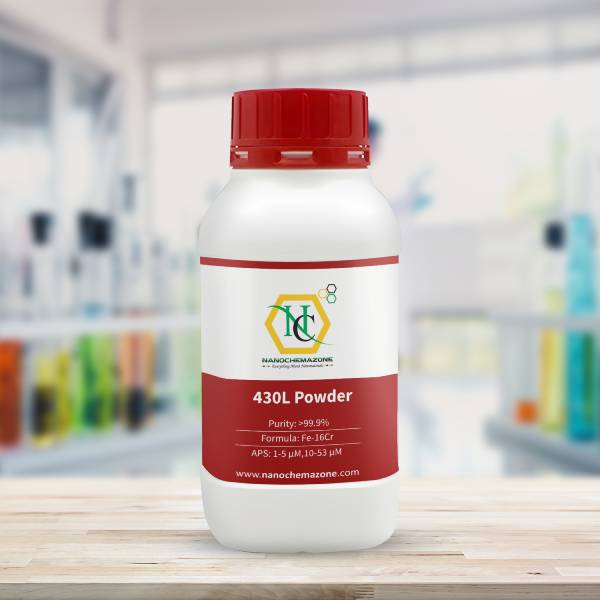

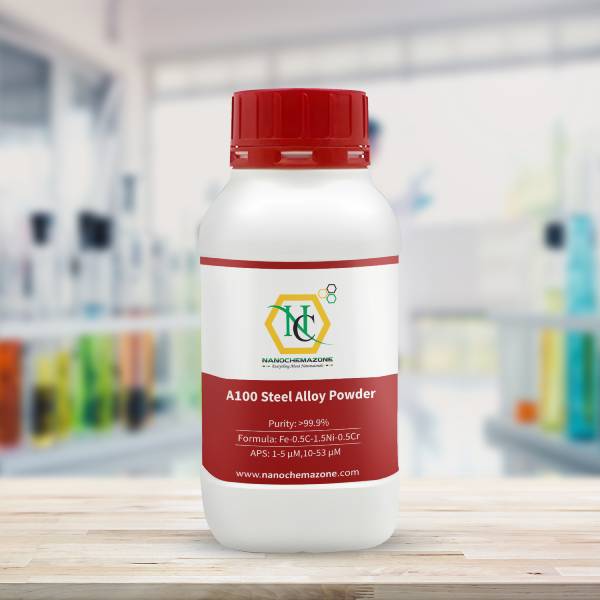
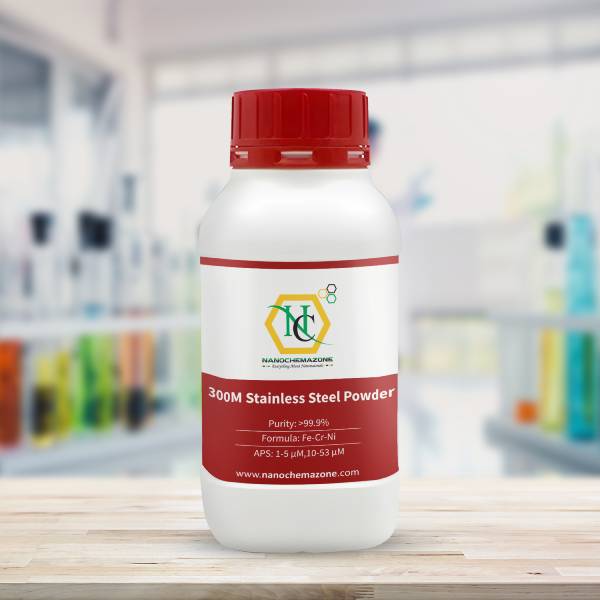
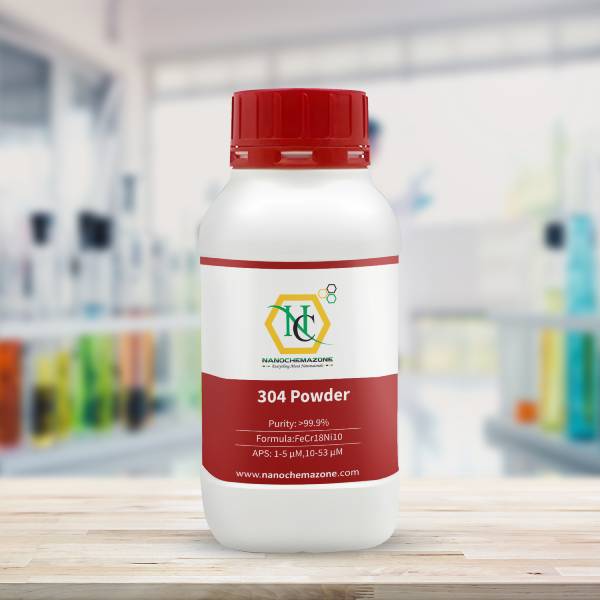
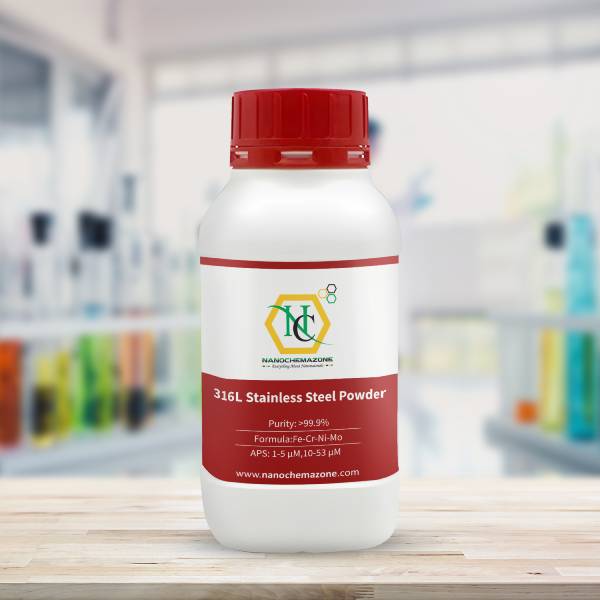
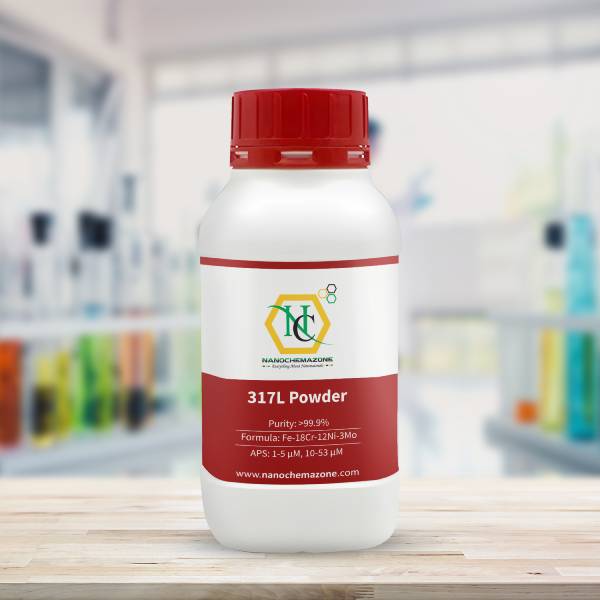
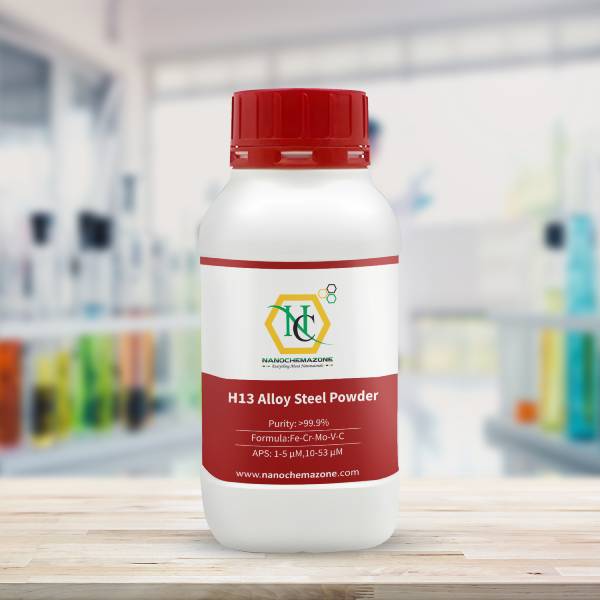
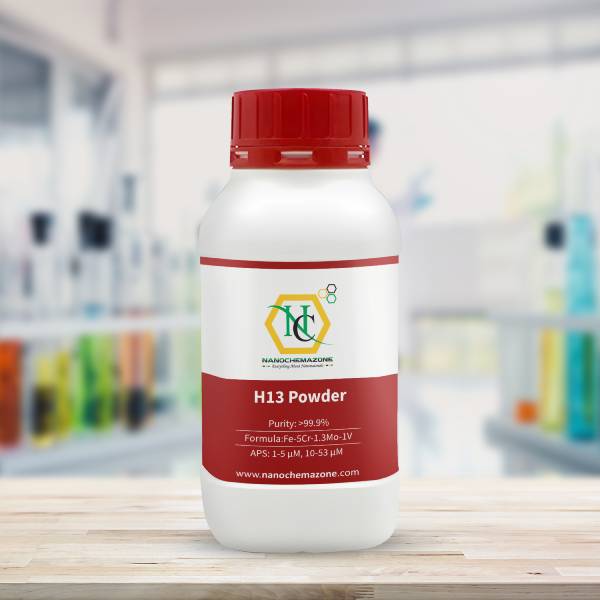
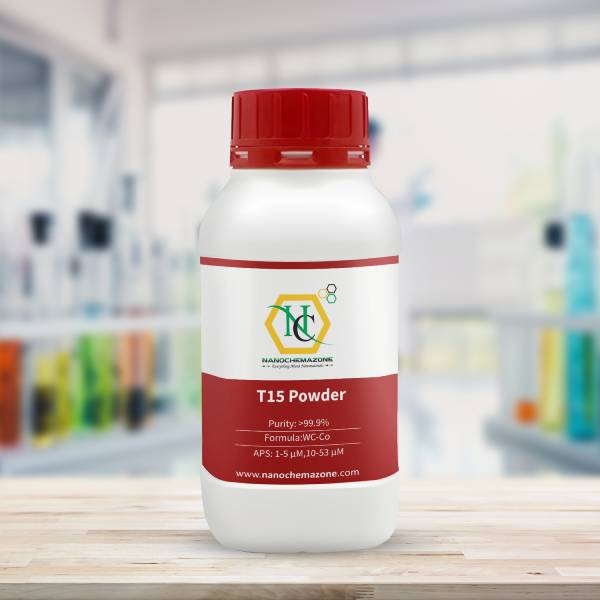
Reviews
There are no reviews yet.